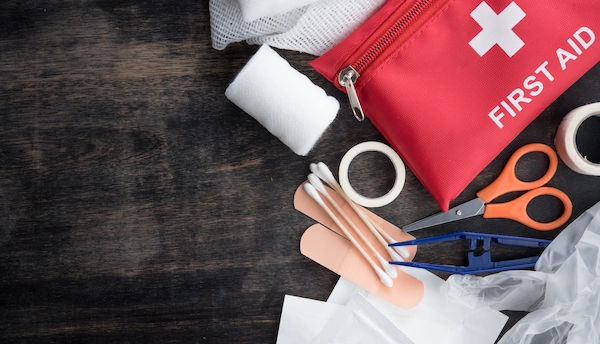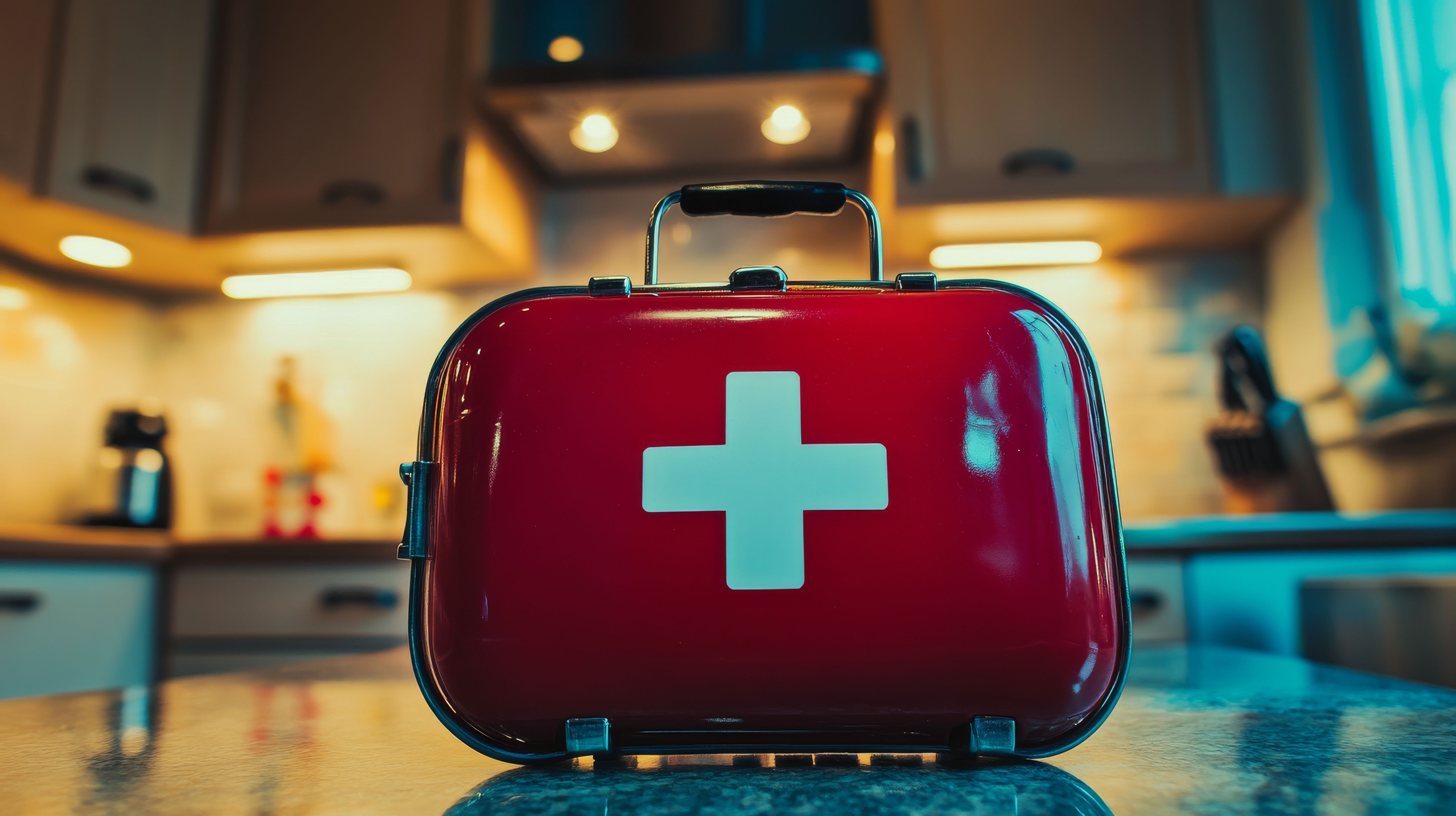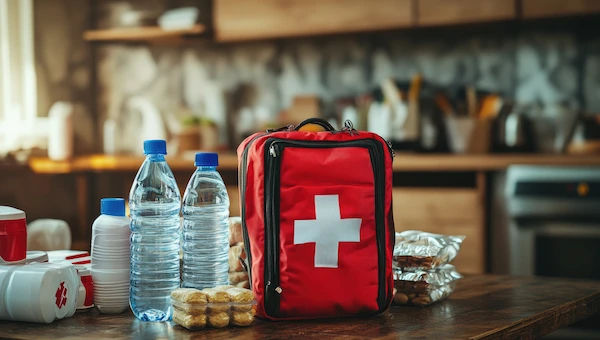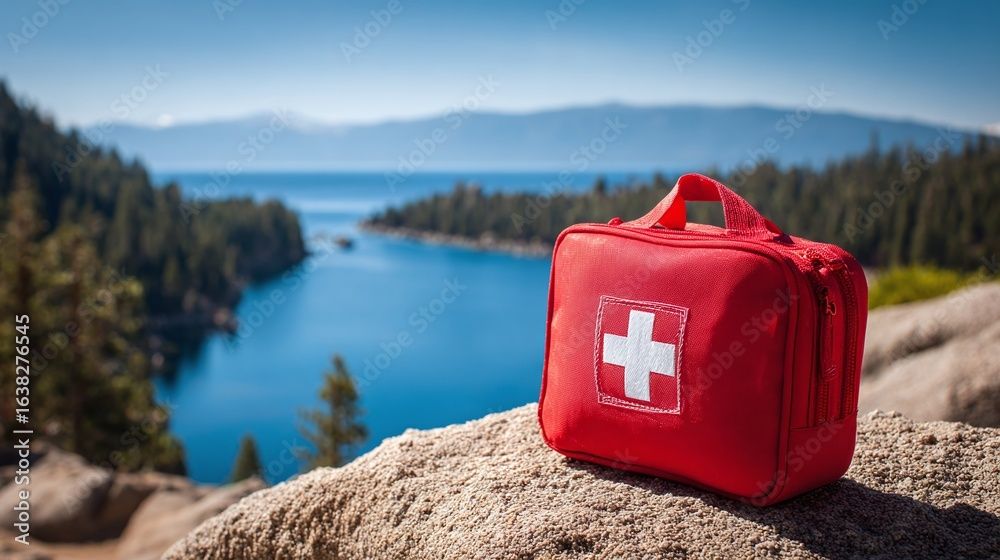Understanding Cpr: Simple Steps to Save a Life
Learn the basics of CPR, including step-by-step instructions for performing it effectively. Be prepared to respond in emergencies and save lives with confidence.

Written by Dr. Md Yusuf Shareef
Reviewed by Dr. D Bhanu Prakash MBBS, AFIH, Advanced certificate in critical care medicine, Fellowship in critical care medicine
Last updated on 23rd Oct, 2025

Introduction
Cardiac arrest can happen anywhere—at home, at the gym, at work, or on the street. In those first minutes, your actions can decide whether someone lives. That’s where CPR comes in. CPR (cardiopulmonary resuscitation) is a simple set of steps that keeps blood and oxygen moving to the brain and heart until professional help arrives. You don’t need to be a medical expert to use CPR; you just need to know what to look for and how to act fast.
In this guide, we break down CPR in clear, practical language. You’ll learn how to recognise cardiac arrest, when to start CPR, how to do hands-only CPR for adults, and how to adapt CPR with rescue breaths for children and infants. We’ll show you how to use an AED, debunk common CPR myths, and explain what the evidence actually says about survival. You’ll also get tips for special situations like drowning, pregnancy, and suspected opioid overdose. By the end, you’ll have the confidence to respond—and possibly save a life.
What CPR Is and Why Every Second Counts
CPR is an emergency technique that uses chest compressions—with or without rescue breaths—to manually pump blood through the body when the heart has stopped beating effectively. When the heart stops, the brain starts to suffer irreversible damage within minutes due to lack of oxygen. High-quality CPR buys time by maintaining blood flow to vital organs until an automated external defibrillator (AED) can deliver a shock or emergency medical services (EMS) can take over.
The Chain of Survival summarises what most improves outcomes: early recognition and call for help, early CPR, rapid defibrillation, effective advanced life support, and post-arrest care. Bystander action is critical. Studies summarised by the American Heart Association note that bystander CPR can double or even triple a person’s chance of survival from out-of-hospital cardiac arrest. In India and many other countries, delays from recognising arrest to starting compressions are common. The simplest way to help is hands-only CPR: push hard and fast in the center of the chest at 100–120 beats per minute and at a depth of about 5–6 cm for adults.
Two small insights to remember: first, good CPR feels “uncomfortable” because you must push hard enough to compress the chest; second, maintaining a steady rhythm matters as much as depth. Using a metronome set to 110 bpm or humming a 100–120 bpm song can help you keep pace (hands-only CPR; chain of survival cpr).
Consult Top Heart Specialists
When to Start CPR: Spotting Cardiac Arrest Fast
Start CPR immediately if an adult is unresponsive and not breathing normally. “Not breathing normally” includes gasping, snorting, or irregular agonal breaths—these are signs of cardiac arrest, not normal breathing. Here’s a simple sequence:
• Check responsiveness: tap the person’s shoulders and shout.
• Check breathing: look for normal chest rise; listen and feel for breathing for no more than 10 seconds.
• Call for help: shout for someone to call your local emergency number (India: 108 for ambulance or 112 for all emergencies). If you’re alone with a mobile phone, call first on speaker, then start CPR.
• Send someone to get an AED if available (airports, malls, gyms often have them).
Children and infants often arrest due to breathing problems rather than primary heart issues. If you’re alone with a child or infant and no mobile phone, perform about 2 minutes of CPR before leaving to call for help (cpr for infants and children). For suspected choking where the person becomes unresponsive, begin CPR and check the mouth for visible obstruction before giving rescue breaths.
Hands-Only CPR for Adults: Step-by-Step
Hands-only CPR is recommended for untrained bystanders or when you prefer not to give rescue breaths. Here’s how to do it:
1) Position: Place the person on a firm, flat surface. Kneel beside the chest.
2) Hand placement: Put the heel of one hand on the centre of the chest (lower half of the breastbone), other hand on top, fingers interlaced.
3) Body mechanics: Lock your elbows, shoulders directly over hands, use your body weight.
4) Compressions: Push hard and fast at a rate of 100–120 per minute, depth 5–6 cm (about 2 inches) for adults. Allow full chest recoil after each compression. Minimise interruptions—no more than 10 seconds when needed.
5) Continue: Keep compressing until an AED is ready to analyse, the person shows signs of life, or professionals take over.
Practical aids: Use a metronome app at 110 bpm or songs like “Stayin’ Alive” (around 104 bpm) to maintain rate (metronome for cpr 100–120 bpm). Switch compressors every 2 minutes if another trained person is available to prevent fatigue—quality drops quickly. If you have a smartwatch with a CPR coach feature, use it to guide rate and depth; some devices now prompt 100–120 bpm and detect pauses.
CPR with Rescue Breaths: Adults, Children, and Infants
Conventional CPR combines compressions and rescue breaths to deliver oxygen, especially crucial for infants, children, and drowning victims. Standard adult sequence for a single rescuer is 30 compressions to 2 breaths (30:2).
Adults (one rescuer):
• 30 compressions at 100–120/min, depth 5–6 cm.
• Open airway (head tilt–chin lift unless neck trauma suspected).
• Give 2 breaths: each over 1 second, watching for visible chest rise. Avoid over-ventilating.
Children (1 year to puberty):
• 30:2 if one rescuer; 15:2 if two rescuers.
• Compression depth: about 5 cm (2 inches) or one-third chest depth.
• Use one or two hands depending on child size.
• Rescue breaths are particularly important because pediatric arrests often begin with breathing problems.
Infants (under 1 year):
• 30:2 if one rescuer; 15:2 if two rescuers.
• Compression depth: about 4 cm (1.5 inches) or one-third chest depth.
• Technique: Two fingers in the center of the chest just below nipple line for one rescuer; two-thumb encircling hands technique for two rescuers.
• Gentle breaths: cover nose and mouth with your mouth; deliver small breaths just to see chest rise (cpr for infants and children; compression to breaths ratio in cpr).
Drowning/asphyxial arrest:
8 Start with 2 rescue breaths before compressions if trained, because oxygenation is the priority.
Unique insight: Use a simple pocket mask with a one-way valve in your home first-aid kit. Practising a proper seal with family members (no air exchange) can build confidence. If your condition does not improve after trying these methods following a breathing-related emergency, book a physical visit to a doctor with Apollo 24|7.
Using an AED: The Defibrillation Piece
An AED can analyse heart rhythm and, if needed, deliver a shock to restart an organised heartbeat. Early defibrillation markedly improves survival in shockable rhythms. Using one is straightforward:
• Power on the AED and follow voice prompts.
• Expose the chest. Quickly dry if wet, shave excessive hair only if a razor is in the kit and pads won’t stick.
• Apply pads: one on the upper right chest (below collarbone), the other on the left side below the armpit.
• Stop CPR when the AED tells you to “analyse.” Ensure no one touches the patient.
• If advised, loudly say “Clear!” and press the shock button. Immediately resume CPR for 2 minutes before the AED re-analyses.
Special considerations:
• Water: Move to a dry surface if possible; quickly dry the chest.
• Implanted devices (pacemaker/ICD): Avoid placing a pad directly over a visible lump; shift pad a few centimeters away.
• Medication patches: Remove with a gloved hand and wipe the area before pad placement (aed use during cpr).
Special Situations and Adaptations
Here are some special situations:
• Opioid overdose: If a person is unresponsive and not breathing normally, start CPR. If naloxone is available, administer it per instructions while continuing compressions. Naloxone can reverse opioid-induced respiratory depression, but CPR maintains circulation until breathing returns (opioid overdose cpr and naloxone).
• Trauma: If severe bleeding is present, control life-threatening bleeding with firm direct pressure or a tourniquet while another rescuer begins CPR. Suspected neck injury? Prioritise chest compressions; avoid head tilt–chin lift—use jaw thrust if trained.
• Pregnancy: Begin standard CPR. If the abdomen is obviously pregnant (second half of pregnancy), manually displace the uterus to the mother’s left to relieve pressure on major vessels and improve circulation during compressions (cpr during pregnancy).
• COVID-19 and infection precautions: For bystanders, hands-only CPR reduces exposure. Covering the person’s mouth/nose with a light cloth or mask can reduce aerosols; prioritise compressions and early AED use if you’re untrained or uncomfortable with rescue breaths. If symptoms of COVID-19 or other respiratory illnesses persist beyond two weeks, consult a doctor online with Apollo 24|7 for further evaluation.
• Unique insight: Prepare a small “response kit” at home—non-latex gloves, a pocket mask, and hand sanitiser. These items increase your willingness to act and your safety.
Consult Top Heart Specialists
Myths, Mistakes, and Legal Protections
• Myth: “I could get sued.” Reality: Many regions have Good Samaritan protections that shield bystanders who provide reasonable help in good faith. India’s Good Samaritan guidelines (2016) encourage bystander assistance and limit liability and police attendance requirements for helpers. Check local laws (good samaritan law cpr protection).
• Myth: “I might break ribs.” Reality: Broken ribs can occur, especially in older adults, but they’re not life-threatening compared with cardiac arrest. Proper hand placement and recoil reduce risk.
Common mistakes to avoid:
• Shallow compressions: Aim for 5–6 cm in adults and allow full recoil.
• Slow rate or variable tempo: Use a metronome at 100–120 bpm.
• Frequent interruptions: Keep pauses under 10 seconds.
• Over-ventilating during rescue breaths: Give just enough air to see chest rise (cpr depth and rate guidelines).
Getting Trained and Staying Ready
Even a short, hands-on class builds confidence and helps you deliver higher-quality CPR. Authoritative providers include the American Heart Association and the Red Cross, which offer in-person and blended online courses for laypeople and healthcare providers. In India, look for hospital-based training programs or first-aid organisations providing community CPR courses (cpr certification near me / online).
Refreshers: Skills decay in months. Schedule a refresher every 6–12 months—many apps offer brief monthly drills. Practice with a low-cost manikin or firm cushion using a metronome. If your household includes children or older adults, teach everyone age-appropriate steps.
Home readiness:
• Post emergency numbers (108/112) near phones.
• Build a small kit with gloves, a pocket mask, and a list of medications/medical conditions for family members.
• Identify the nearest AEDs and share locations with neighbours (community AED mapping).
• Enable emergency SOS on smartphones and consider installing a first-responder alert app where available.
Health maintenance: Many cardiac arrests stem from underlying heart disease. Managing blood pressure, cholesterol, and diabetes lowers risk. Apollo 24|7 offers convenient home collection for tests like lipid profile and HbA1c—use results to discuss prevention with a clinician. If you experience new chest pain, severe breathlessness, or fainting, seek urgent care. If symptoms persist or recur, consult a doctor online with Apollo 24|7.
What the Evidence Shows: Outcomes and Impact
Out-of-hospital cardiac arrest (OHCA) survival remains challenging, but community action changes the trajectory. The AHA reports that immediate bystander CPR can double or triple the likelihood of survival. Large registries show that early, high-quality compressions and rapid defibrillation are the strongest modifiable links in the Chain of Survival. Compression quality matters: rates between 100–120 per minute, adequate depth (5–6 cm for adults), full recoil, and minimal pauses correlate with better outcomes. AED use before EMS arrival substantially increases survival for shockable rhythms—public-access defibrillation programs in airports and casinos have documented markedly higher survival rates when trained staff or bystanders act quickly.
Pediatric arrests have different etiologies, with respiratory causes dominating; as a result, adding rescue breaths (30:2 single rescuer; 15:2 two rescuers) is emphasised for children and infants. Drowning is another scenario where ventilation is key. COVID-19 prompted renewed focus on hands-only CPR to reduce exposure risks while preserving the lifesaving benefits of early compressions.
Aftercare: What to Do Once a Pulse Returns
If the person shows signs of life—coughing, purposeful movement, normal breathing—or an AED indicates ROSC (return of spontaneous circulation), switch to supportive care:
• Place in the recovery position if they’re breathing normally and have no suspected trauma: on their side with the head tilted back slightly to keep the airway open.
• Monitor breathing and responsiveness continuously.
• Keep them warm and reassure them until EMS arrives.
• Share details with responders: time arrest recognised, time CPR started, use of AED and shocks delivered, any medications administered.
Rescuers matter too. It’s normal to feel shaken after a CPR event. Debrief with EMS if possible, and consider a brief check-in with a healthcare provider if you experience ongoing stress or sleep difficulties. If the person remains unwell afterward, or there were preceding symptoms like chest pain or fainting, encourage timely follow-up. If symptoms persist beyond two weeks, consult a doctor online with Apollo 24|7 for further evaluation.
Consult Top Heart Specialists
Conclusion
CPR is a simple, high-impact skill that anyone can learn and use. In a cardiac arrest, every second without action lowers the chance of survival. By recognising unresponsiveness and abnormal breathing, calling for help, starting hands-only CPR, and using an AED quickly, you become the most important link in the Chain of Survival. For children and infants, adding rescue breaths is especially important, and for special scenarios like drowning or suspected opioid overdose, small adjustments can make a big difference.
The data are clear: bystander CPR dramatically improves survival. The most common barrier is hesitation—worrying about doing it “perfectly,” legal concerns, or fear of harm. Good Samaritan protections exist in many regions, and doing something is far better than doing nothing. Take a short class, practice with a metronome, map local AEDs, and keep a simple first-aid kit handy. Managing risk factors like blood pressure, cholesterol, and diabetes also lowers the chance of emergencies; Apollo 24|7 offers home collection for key tests such as lipid profile and HbA1c, and you can connect with a clinician to personalise your prevention plan.
Consult Top Heart Specialists

Dr. Lal Daga
Cardiologist
20 Years • MBBS, DNB [MED], DNB [CARDIO], FESC [INT], MNAMS
Ahmedabad
Apollo Hospitals Gandhinagar, Ahmedabad
Dr. Diganta Buragohain
Cardiologist
1 Years • "DM (Cardiology) in 2025 from NEIGRIHMS, Shillong MD (General Medicine) in 2020 Gauhati Medical College, MBBS in 2015 from Gauhati Medical College,"
Guwahati
Apollo Excelcare Hospital, Guwahati

Dr. Karthigesan A M
Cardiologist and Electrophysiologist
17 Years • MBBS, MD, DNB (Gen. Med.), DNB (Cardio.), FHRS, Certified (Cardiac Device Specialist, Cardiac Electrophysiology Specialist), Fellow (Electrophysiology)
Chennai
Apollo Hospitals Greams Road, Chennai
(175+ Patients)

Dr. Zulkarnain
General Physician
2 Years • MBBS, PGDM, FFM
Bengaluru
PRESTIGE SHANTHINIKETAN - SOCIETY CLINIC, Bengaluru
Dr. Sibashankar Kar
Cardiologist
10 Years • MBBS, DNB
Bhubaneswar
Hi-Tech Medical College & Hospital, Bhubaneswar
Consult Top Heart Specialists

Dr. Lal Daga
Cardiologist
20 Years • MBBS, DNB [MED], DNB [CARDIO], FESC [INT], MNAMS
Ahmedabad
Apollo Hospitals Gandhinagar, Ahmedabad
Dr. Diganta Buragohain
Cardiologist
1 Years • "DM (Cardiology) in 2025 from NEIGRIHMS, Shillong MD (General Medicine) in 2020 Gauhati Medical College, MBBS in 2015 from Gauhati Medical College,"
Guwahati
Apollo Excelcare Hospital, Guwahati

Dr. Karthigesan A M
Cardiologist and Electrophysiologist
17 Years • MBBS, MD, DNB (Gen. Med.), DNB (Cardio.), FHRS, Certified (Cardiac Device Specialist, Cardiac Electrophysiology Specialist), Fellow (Electrophysiology)
Chennai
Apollo Hospitals Greams Road, Chennai
(175+ Patients)

Dr. Zulkarnain
General Physician
2 Years • MBBS, PGDM, FFM
Bengaluru
PRESTIGE SHANTHINIKETAN - SOCIETY CLINIC, Bengaluru
Dr. Sibashankar Kar
Cardiologist
10 Years • MBBS, DNB
Bhubaneswar
Hi-Tech Medical College & Hospital, Bhubaneswar
Consult Top Heart Specialists

Dr. Lal Daga
Cardiologist
20 Years • MBBS, DNB [MED], DNB [CARDIO], FESC [INT], MNAMS
Ahmedabad
Apollo Hospitals Gandhinagar, Ahmedabad
Dr. Diganta Buragohain
Cardiologist
1 Years • "DM (Cardiology) in 2025 from NEIGRIHMS, Shillong MD (General Medicine) in 2020 Gauhati Medical College, MBBS in 2015 from Gauhati Medical College,"
Guwahati
Apollo Excelcare Hospital, Guwahati

Dr. Karthigesan A M
Cardiologist and Electrophysiologist
17 Years • MBBS, MD, DNB (Gen. Med.), DNB (Cardio.), FHRS, Certified (Cardiac Device Specialist, Cardiac Electrophysiology Specialist), Fellow (Electrophysiology)
Chennai
Apollo Hospitals Greams Road, Chennai
(175+ Patients)

Dr. Zulkarnain
General Physician
2 Years • MBBS, PGDM, FFM
Bengaluru
PRESTIGE SHANTHINIKETAN - SOCIETY CLINIC, Bengaluru
Dr. Sibashankar Kar
Cardiologist
10 Years • MBBS, DNB
Bhubaneswar
Hi-Tech Medical College & Hospital, Bhubaneswar
More articles from Emergency Care
Frequently Asked Questions
1) What is the correct compression rate and depth in CPR?
Aim for 100–120 compressions per minute and a depth of 5–6 cm (2 inches) in adults, with full chest recoil (cpr depth and rate guidelines).
2) When should I use hands-only CPR versus rescue breaths?
Use hands-only CPR for unresponsive adults not breathing normally if you’re untrained or unwilling to give breaths. For children, infants, and drowning cases, use compressions with rescue breaths (how to do cpr step by step).
3) How long should I continue CPR?
Continue until an AED is ready to analyse, the person shows signs of life, professionals take over, or you are physically unable to continue. Switch compressors every 2 minutes if possible (compression to breaths ratio in cpr).
4) Can I get in legal trouble for performing CPR?
Many regions have Good Samaritan laws protecting bystanders who act in good faith. India’s Good Samaritan guidelines encourage helping and limit liability (good samaritan law cpr protection).
5) What should I do after the person starts breathing again?
Place them in the recovery position, monitor breathing and responsiveness, keep them warm, and provide a clear handover to EMS. If they had preceding symptoms like chest pain or fainting, arrange follow-up. If symptoms persist, consult a doctor online with Apollo 24|7.




